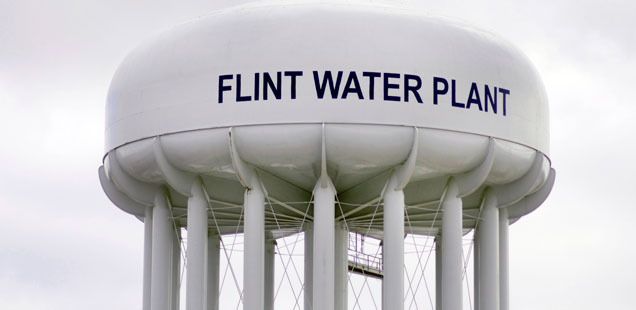Michigan home energy efficiency standards stalled amid homebuilders lawsuit – Bridge Michigan

Report on Proposed Michigan Building Code Update
Introduction: Aligning Construction with Sustainable Development Goals
A proposed update to Michigan’s home construction codes, based on the 2021 International Energy Conservation Code (IECC), has become a point of contention between state regulators and the homebuilding industry. The debate centers on the balance between upfront construction costs and long-term benefits, directly engaging with several United Nations Sustainable Development Goals (SDGs), including SDG 7 (Affordable and Clean Energy), SDG 8 (Decent Work and Economic Growth), SDG 11 (Sustainable Cities and Communities), and SDG 13 (Climate Action).
Proposed Standards and Sustainability Impacts
Key Mandates for Energy Efficiency
The proposed standards aim to enhance the energy efficiency of new homes, a core tenet of SDG 7 (Affordable and Clean Energy). The specific requirements include:
- Increased ceiling insulation beyond current standards.
- Additional basement wall insulation.
- Tighter air seals around windows and ceilings.
- Mandatory rigid foam insulation on all exterior walls.
- Exclusive use of LEDs for all lighting sources.
Contributions to Climate Action (SDG 13) and Economic Growth (SDG 8)
Federal government analysis projects significant positive outcomes aligned with key SDGs. The adoption of these standards is estimated to:
- Reduce statewide carbon dioxide emissions by 44,850 metric tons in the first year, directly supporting SDG 13 (Climate Action).
- Stimulate the creation of approximately 10,000 jobs over 30 years through increased construction activity, contributing to SDG 8 (Decent Work and Economic Growth).
- Increase homeowners’ disposable income over the long term due to energy savings, fostering economic resilience.
Points of Contention: Cost, Efficacy, and Housing
Industry Opposition and Alternative Frameworks
The homebuilding industry argues that the 2021 IECC contains inefficient mandates that increase costs without proportional energy savings. An example cited is the requirement to insulate heating and cooling ducts that are already located within the insulated building envelope. Industry representatives advocate for bypassing the 2021 code in favor of the newly released 2024 IECC, which they contend offers greater flexibility for builders and homeowners.
Defining Cost-Effectiveness
A central conflict is the interpretation of Michigan’s legal requirement that code updates be “cost-effective,” with economic benefits exceeding costs within a seven-year period. Two different methodologies are being used:
- Industry Analysis: Citing a Department of Energy report, the industry points to a “simple payback” period of just under nine years, which would not meet the state’s seven-year mandate.
- State Regulator Analysis: Regulators utilize a lifecycle cost analysis, factoring in a 30-year mortgage. This model indicates that homeowners would achieve a positive cash flow from energy savings within two to six years, well within the legal and sustainability frameworks.
Proponents of the update, such as Isaac Elnecave of the nonprofit Phius, express confidence that the construction market will adapt and innovate to mitigate costs, a process that supports SDG 9 (Industry, Innovation, and Infrastructure).
Impact on Sustainable Cities and Communities (SDG 11)
The homebuilders’ lawsuit alleges that the increased costs associated with the new code would exacerbate Michigan’s housing shortage, running counter to the goals of SDG 11 (Sustainable Cities and Communities), which includes access to affordable housing.
However, housing policy experts like Alex Horowitz of Pew suggest that energy efficiency mandates play a relatively minor role in rising housing costs. They identify other, more significant barriers to affordable housing, including:
- Restrictive zoning policies.
- Large minimum lot size requirements.
- Prohibitions on building apartments on commercially zoned land.
- Broader factors such as material price increases and labor shortages.
National Context and Benchmarking
State-Level Adoption of Energy Codes
According to the Department of Energy, Michigan’s current code, based on the 2015 IECC, lags behind many other states. The national landscape for energy code adoption is as follows:
- 26 states have updated their codes beyond the 2015 IECC.
- 12 states have already adopted the 2021 IECC.
- 8 states, including Michigan, currently use codes based on the 2015 IECC.
- 16 states either use earlier versions or have no statewide building code.
This data indicates a national trend towards adopting more stringent energy efficiency standards in building infrastructure, aligning with the objectives of SDG 7 and SDG 13.
Analysis of Sustainable Development Goals in the Article
1. Which SDGs are addressed or connected to the issues highlighted in the article?
The article discusses issues related to several Sustainable Development Goals (SDGs) through its focus on new home construction standards in Michigan. The primary connections are:
- SDG 7: Affordable and Clean Energy: The core of the article is the debate over new energy efficiency standards for homes. This directly relates to reducing energy consumption, which makes energy more affordable for homeowners and cleaner by reducing the demand on energy sources.
- SDG 8: Decent Work and Economic Growth: The article explicitly mentions the economic impact of the proposed standards, including job creation.
- SDG 11: Sustainable Cities and Communities: The discussion touches upon housing affordability and the ongoing housing shortage, which are key components of creating sustainable communities.
- SDG 13: Climate Action: A major justification for the new building codes is their potential to reduce carbon dioxide emissions, directly addressing climate change mitigation.
2. What specific targets under those SDGs can be identified based on the article’s content?
Based on the article’s content, the following specific targets can be identified:
- Target 7.3: “By 2030, double the global rate of improvement in energy efficiency.”
- Explanation: The proposed standards, which include “several inches in added ceiling insulation,” “more basement wall insulation,” and “LEDs for all light sources,” are direct measures aimed at significantly improving energy efficiency in the residential sector. The entire debate between the 2021 and 2024 IECC codes is about the level and method of achieving this improved efficiency.
- Target 8.2: “Achieve higher levels of economic productivity through diversification, technological upgrading and innovation, including through a focus on high-value added and labour-intensive sectors.”
- Explanation: The article notes that the federal government estimates the changes “could create 10,000 more jobs by spurring more construction.” This directly links the policy to economic growth and job creation within the construction sector, a labor-intensive industry.
- Target 11.1: “By 2030, ensure access for all to adequate, safe and affordable housing…”
- Explanation: The article highlights a conflict with this target. The homebuilders’ lawsuit alleges that adopting the new code would “come into ‘direct conflict’ with the state’s ability to address an ongoing housing shortage because it would drive home costs up.” This raises concerns about housing affordability, a central element of Target 11.1.
- Target 13.2: “Integrate climate change measures into national policies, strategies and planning.”
- Explanation: Michigan’s proposal to update its state building codes to the 2021 IECC is a clear example of integrating climate change mitigation measures into state-level policy and planning. The primary environmental justification mentioned is the reduction of greenhouse gas emissions.
3. Are there any indicators mentioned or implied in the article that can be used to measure progress towards the identified targets?
Yes, the article mentions or implies several indicators that can be used to measure progress:
- For Target 7.3 (Energy Efficiency):
- Indicator: The article discusses the “cost-effectiveness” of the new standards. The two methods mentioned—the “simple payback” period of just under nine years and the positive cash flow within two to six years when spread over a mortgage—are direct ways of measuring the financial benefits of energy efficiency improvements for homeowners.
- For Target 8.2 (Economic Growth):
- Indicator: The article provides a specific quantitative indicator for job creation: the potential to “create 10,000 more jobs” over the next 30 years. This is a direct measure of the policy’s impact on employment.
- For Target 11.1 (Affordable Housing):
- Indicator: The article refers to an “ongoing housing shortage” and the concern that the new codes would “drive home costs up.” Changes in housing affordability and availability would serve as indicators for this target. While not quantified in the article, the existence of the shortage is presented as a key fact.
- For Target 13.2 (Climate Action):
- Indicator (related to 13.2.2 – Total greenhouse gas emissions): The article provides a precise, quantifiable indicator for climate action. It states that the federal government estimates the changes would “cut statewide carbon dioxide emissions by 44,850 metric tons in the first year.” This is a direct measurement of the policy’s contribution to reducing greenhouse gas emissions.
4. Summary Table of SDGs, Targets, and Indicators
| SDGs | Targets | Indicators Identified in the Article |
|---|---|---|
| SDG 7: Affordable and Clean Energy | 7.3: Double the global rate of improvement in energy efficiency. | The “simple payback” period (under 9 years) and positive cash flow calculations (2-6 years) used to measure the cost-effectiveness of energy efficiency upgrades (insulation, LEDs, etc.). |
| SDG 8: Decent Work and Economic Growth | 8.2: Achieve higher levels of economic productivity and create jobs. | The projection that the new standards “could create 10,000 more jobs” by spurring construction. |
| SDG 11: Sustainable Cities and Communities | 11.1: Ensure access for all to adequate, safe and affordable housing. | The mention of an “ongoing housing shortage” and the concern that new codes could “drive home costs up,” impacting housing affordability. |
| SDG 13: Climate Action | 13.2: Integrate climate change measures into policies and planning. | The specific estimate that the new building codes would “cut statewide carbon dioxide emissions by 44,850 metric tons in the first year.” |
Source: bridgemi.com

What is Your Reaction?
 Like
0
Like
0
 Dislike
0
Dislike
0
 Love
0
Love
0
 Funny
0
Funny
0
 Angry
0
Angry
0
 Sad
0
Sad
0
 Wow
0
Wow
0












































































